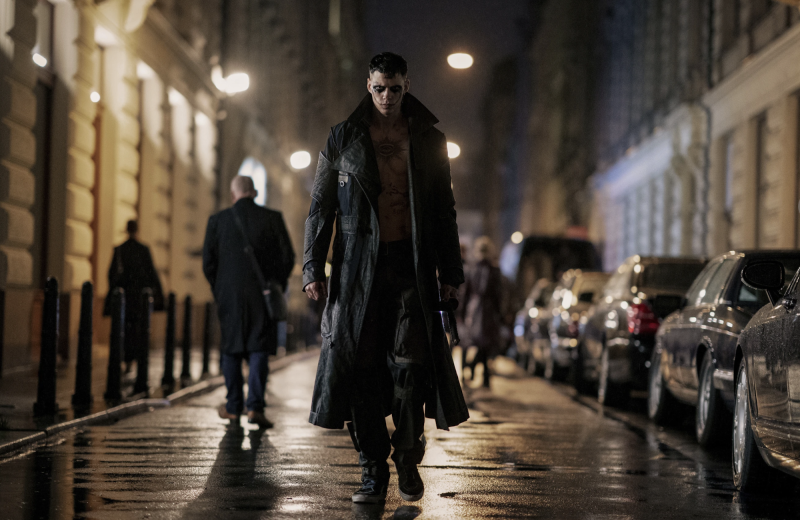The first half drags as it sets the table for the steady beat of limbs and necks being detached at the end. Eric and his love, Shelly (played by an uneven FKA Twigs), meet in a rehab prison for wayward youth that is so well lit and appointed that it looks more like an airport lounge where the cappuccinos are $19 but the Wi-Fi is complimentary.
Eric is a gentle loner — tortured by a past the writers don’t bother filling in, who likes to sketch in a book (universal cinema code signaling a sensitive soul) and is heavily tattooed (he’s often shirtless). His apartment has rows of mannequins with their heads covered in plastic and his new love calls him “brilliantly broken.” He’s like a Blink-182 lyric come to life.
Shelly is more complex, but that’s because the writers maybe gave up on giving her a real backstory. She has a tattoo that says “Laugh now, cry later,” reads serious literature and loves dancing in her underwear. She clearly comes from wealth and has had a falling out with her mom, but has also done an unimaginably horrible thing, which viewers will learn about at the end.
Part of the trouble is that the lead couple cast off very little electricity, offering a love affair that’s more teen-like than all-consuming. And this is a story that needs a love capable of transcending death.
There are lots of cool-looking moments — mostly Skarsgård in a trench coat, stomping around the desolate concrete jungle in the rain at night — until The Crow builds to one of the better action sequences this year, albeit another one of those heightened showdowns at the opera.





